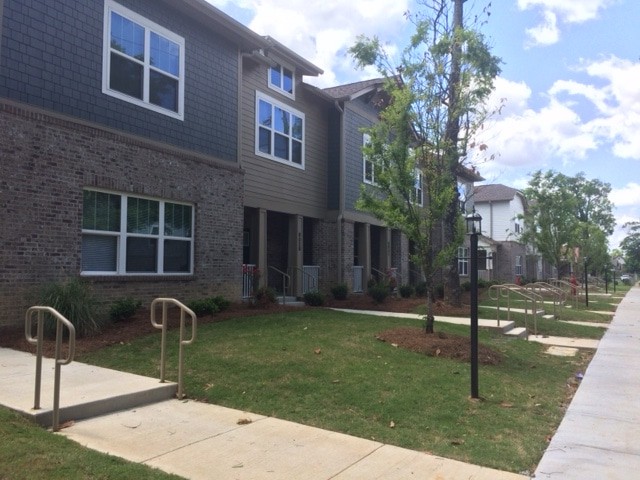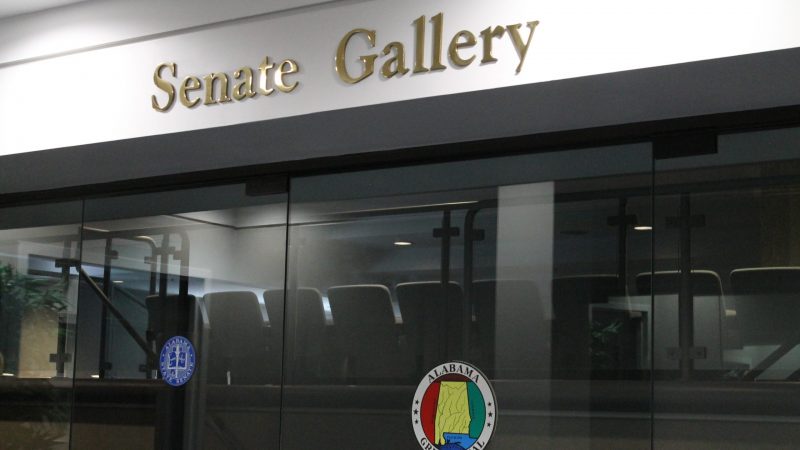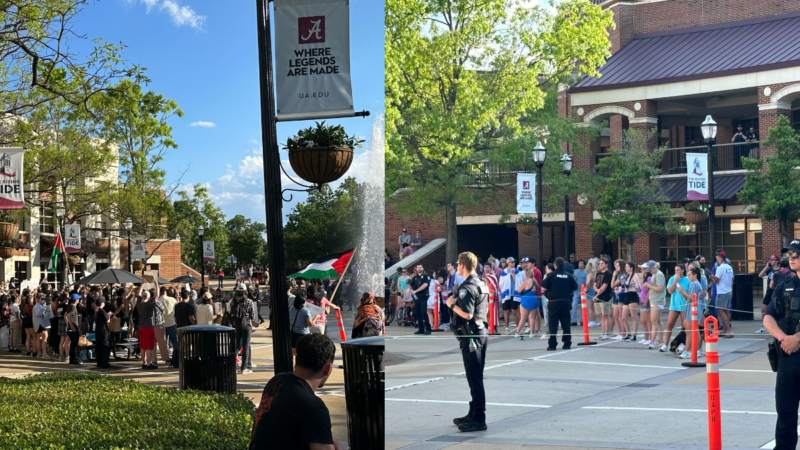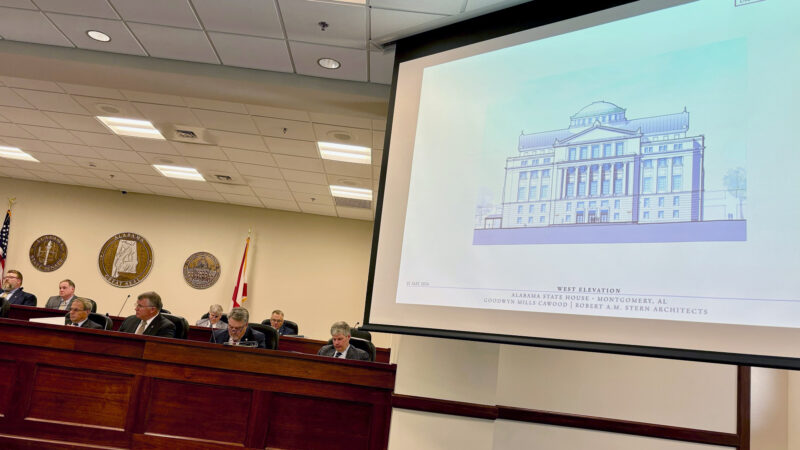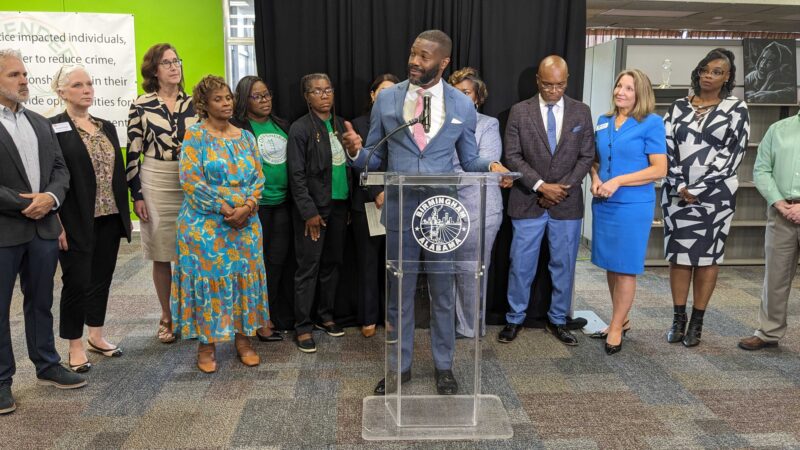Birmingham Revitalization: Feelings of Hope, Fear in Woodlawn
Standing on First Ave. South in Woodlawn, Kelleigh Gamble is so recognizable that people stop dead in their tracks just to say hello, even when they’re driving. One resident nearly causes an accident when she sees him.
“It’s not me it’s the work,” Gamble says humbly. He’s the real estate director at the Woodlawn Foundation, an organization working to revitalize the area in partnership with other community groups. One of the revitalization efforts is the foundation’s Homeowner Rehabilitation Program.
“We added a ramp to this house,” he says, pointing to a handful of houses on First Ave. South that have had facelifts as well as internal improvements. “We added some weatherization to this home. We updated all of her electrical work, because she was on fuse boxes.”
The Woodlawn Foundation has helped around 60 homeowners through this program, which is funded by a federal grant. Another 200 are currently on a waiting list, Gamble says. This is just one of the ways the foundation is trying to spur investment and woo former residents back to the neighborhood.
“Come on back downtown to Woodlawn,” he exclaims. “Your mom’s, or your grandmother’s or your aunt’s house is here. You go to church here. Stay here.”
Woodlawn was a predominantly white neighborhood until it was integrated in the 1970s. After that, many whites fled, migrating over the mountain and Woodlawn became predominantly black. And then many of these residents left too. The foundation is trying to change that with projects like the Park at Wood Station, a 64-unit townhouse complex on First Ave. South. It’s less than a year old and Gamble says there are already roughly 1,500 people waiting for vacancies. It’s reserved for renters who make less than 60 percent of the median household income. People like Jackie McKinney, who retired to Wood Station from her previous home nearby on 50th Street, where she says she was scared … all the time.
“I was afraid to even go out the house,” McKinney says.
Looking back, she remembers seeing prostitutes and drug deals on a regular basis. But her life at Wood Station is just the opposite, she says. A more robust police presence and strict neighborhood rules make her feel safe enough to go outside and sit on her porch, even in the middle of the night.
“When I feel like I want to go out, yeah I go out. It’s all together different than where I was on 50th St., says McKinney.
She credits her newfound safety and security to Woodlawn’s revitalization, which has also attracted businesses. But some question if this is the best development for the community.
“The face of Woodlawn is changing; It’s becoming diverse,” says Myeisha Hutchinson, president of the Oak Ridge Park Neighborhood Association. “And with diversity, with no cultural lessons – and this is everywhere – there comes fear.”
Development is coming mostly from white-owned businesses whose stakeholders don’t live in Woodlawn, she says. This is making residents feel like their neighborhood is under siege. Hutchinson says that while she appreciates the interest in her community, these businesses don’t reflect the faces of Woodlawn today.
“I don’t think it’s intentional, because when you talk to progressive whites in some cases they just don’t get it,” Hutchinson says. “They just say, ‘Oh I don’t want to see color.’ But that’s the history of our city. We’ve never really had a big conversation about it.”
Development could potentially raise property values and in turn property taxes. That’s not happening at the moment, but residents of Woodlawn, many of whom are poor, fear being displaced or priced out of their homes. As for new businesses, Hutchinson hopes current residents will be encouraged to become entrepreneurs. Hutchinson says diversity is good because people need to see those who look like themselves, but also those who don’t. That’s an idea Woodlawn continues to struggle with as interest in the area grows.
Gambling bill in doubt with three days left in the legislative session
Alabama lawmakers are coming down to the finish line for this year’s legislative session. Many bills await passage, but perhaps the biggest one up in the air is a lottery and gambling bill.
Pro-Palestinian demonstration draws counter-protest at University of Alabama
Students gathered demanding the school call for a permanent and immediate ceasefire and to push the school to sever ties with defense contractor Lockheed Martin.
A new Statehouse and related projects will cost about $400 million
The Alabama Legislative Council, a 20-member panel comprised of legislative leaders and their appointees, approved the construction of the new Statehouse last year. The panel was given an update on the project on Wednesday.
New pilot program will offer housing, resources to people leaving prison
The Birmingham Reentry Alliance will provide wrap around services to dozens of men and women adjusting to life after prison.
Alabama committee advances ban on LGBTQ+ pride flags in classrooms
The Senate Education Policy Committee voted 5-2 for the House-passed bill, putting the proposal in line for a possible final passage in the last four days of the legislative session.
A New Orleans garden paid hundreds of dollars in fees for a sewer that doesn’t exist
Galvez Garden owner Lissie Stewart has been fighting the New Orleans Sewerage and Water Board over inaccurate billing for years.
